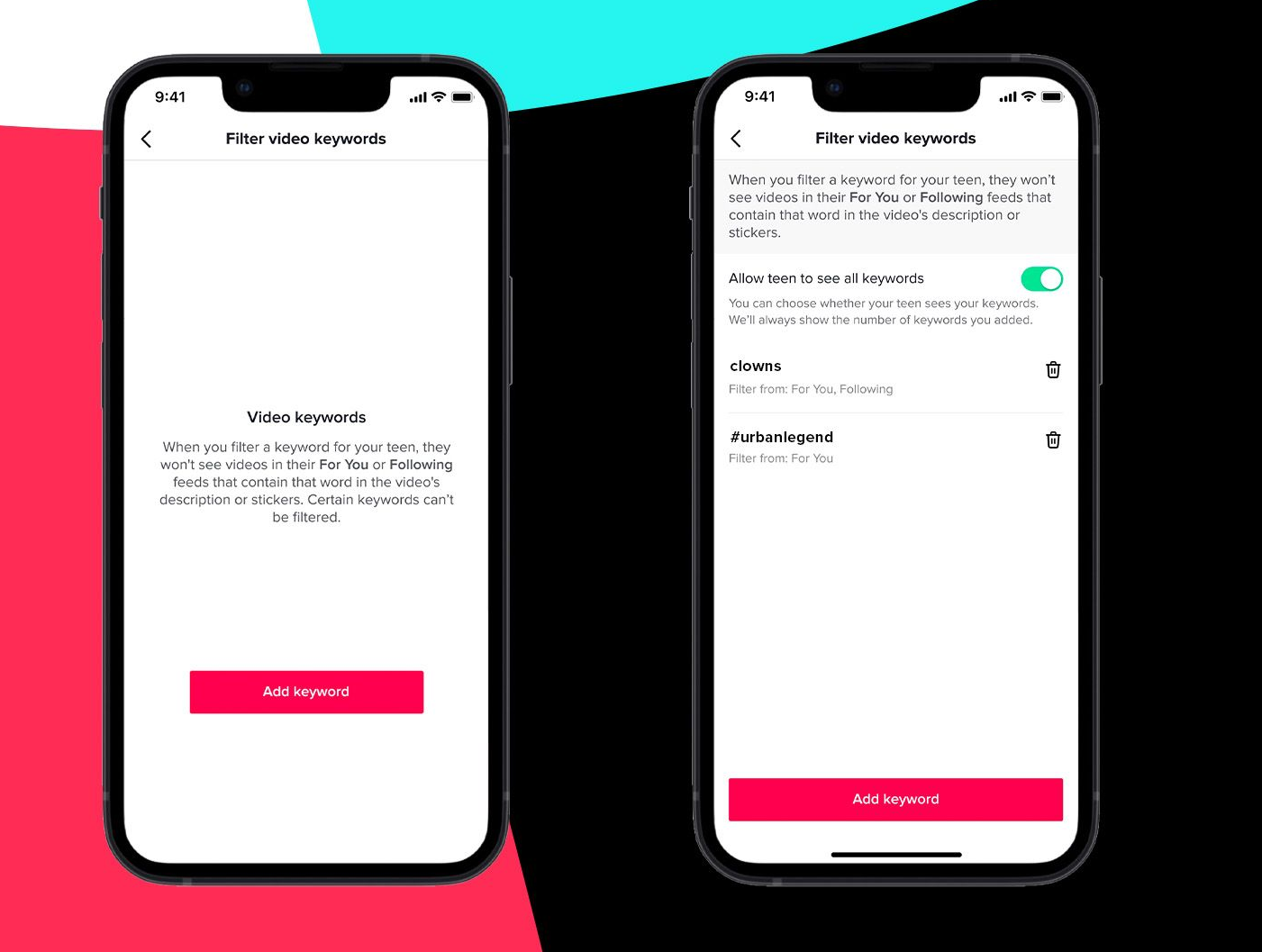TikTok’s giving parents more tools to manage the content that their kids are exposed to in the app, with an updated element of its Family Pairing option that’ll enable parents to block videos based on custom keywords, in addition to its existing mature content filters.

As explained by TikTok
“Last year we launched a content filtering tool to allow people to filter out videos with words or hashtags they’d prefer to avoid seeing in their For You or Following feeds. Since then, we’ve heard from parents and caregivers that they’d like more ways to customize the topics their teen may prefer not to stumble upon, as every teen is unique and caregivers are often closest to their teen’s individual needs. Today, we’re bringing this tool to Family Pairing to empower caregivers to help reduce the likelihood of their teen viewing content they may uniquely find jarring.”
As you can see in the above image, in addition to TikTok’s in-built content levels filtering, parents will now also be able to eliminate personally offensive or concerning content from their kids’ feeds – in this example, by culling videos related to ‘clowns’.
Because clowns freak people out. They’re weird – in fact, I’d be turning this specific one on straight away, not because they scare me, but just.. clowns. They’re weird (apologies to the Clown Guild).
Keyword filtering will only apply to videos that include your chosen keywords in the description, or in stickers included in the clip, so it won’t eliminate all instances of said content. But it could provide another way to limit exposure to potentially disturbing material in the app.
On a related front, TikTok’s also announced a new Youth Content Council initiative, which will see the app work with teens to establish more effective approaches to safety and usage management.
“In a similar way to how we engage regularly with more than 50 academics and leading experts from around the world through our Content and Safety Advisory Councils, this new Youth Council will provide a more structured and regular opportunity for youth to provide their views. We’re looking forward to sharing more in the coming months about this forum and how teens can take part.”
Getting insights from teens themselves will help TikTok more effectively manage this element, with direct input from those impacted, which could help to build better tools to meet their needs, while also protecting their privacy in the app.
TikTok has become a key interactive tool for many young users, with two-thirds of US teens (13-17) now using the app for entertainment, discovery and social connection. Many users younger than this also regularly access the app, though TikTok has been implementing improved age-gating features to stop those under 13 from using the platform.
Even so, the stats underline why these initiatives are so important, in both providing more peace of mind for parents, while also protecting young users from harmful exposure in the app.
Because that exposure can cause significant harm, and we need to do all that we can to protect youngsters from such, and avoid them being confronted with the worst of the world, before they have the capacity to deal with it.
TikTok’s working to address this, and these new tools will provide more options for parents to manage their own kids’ access.



